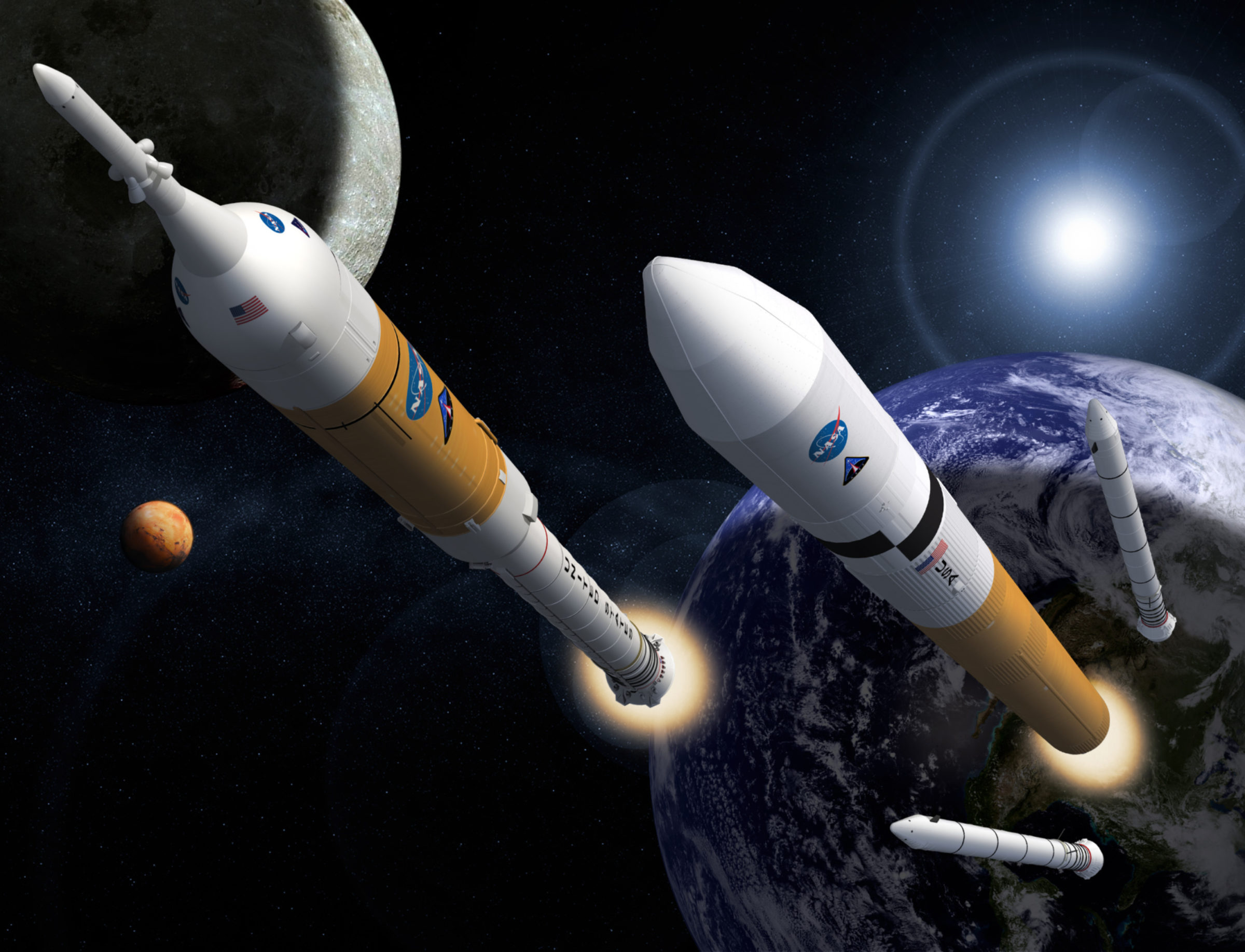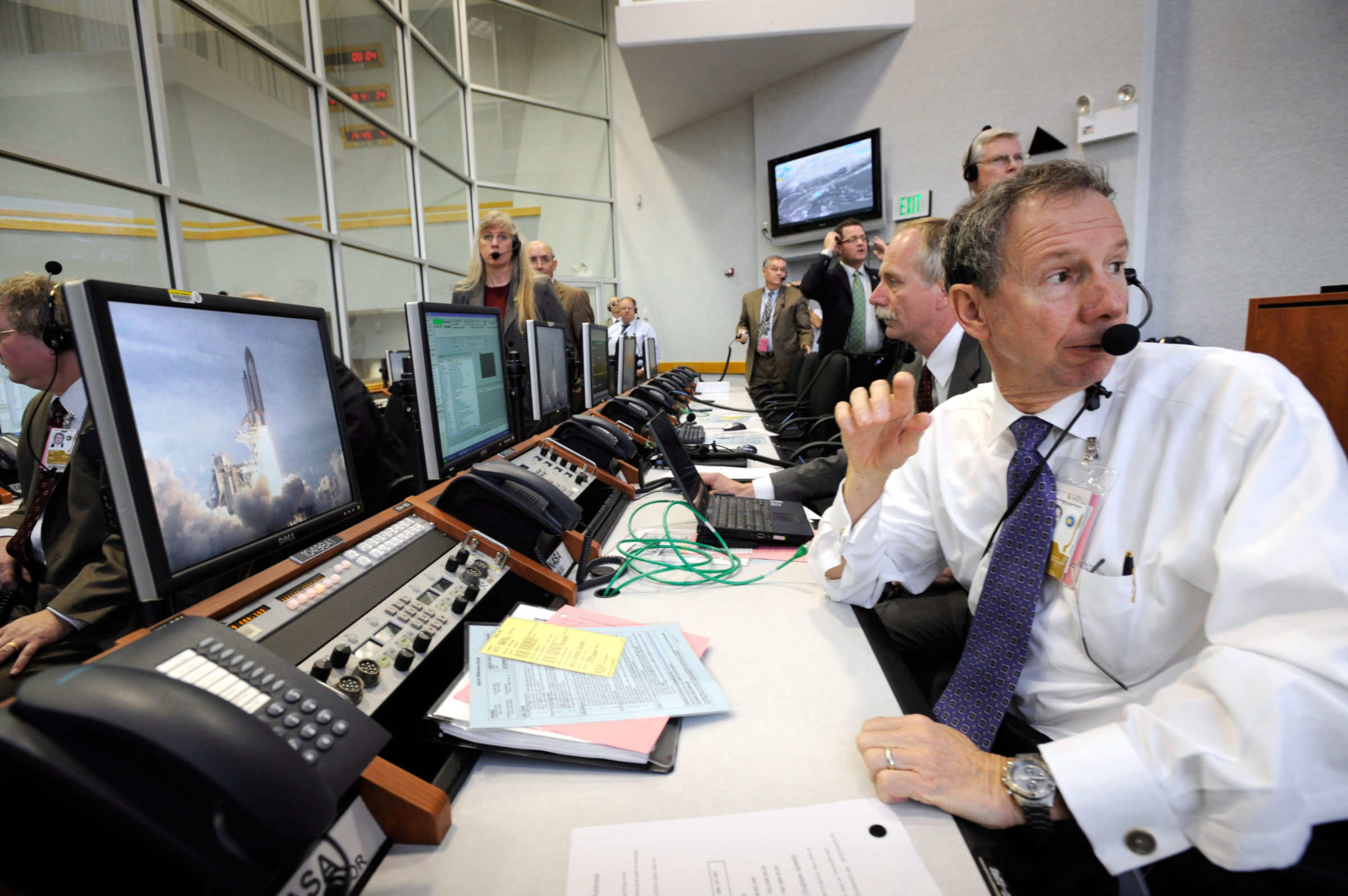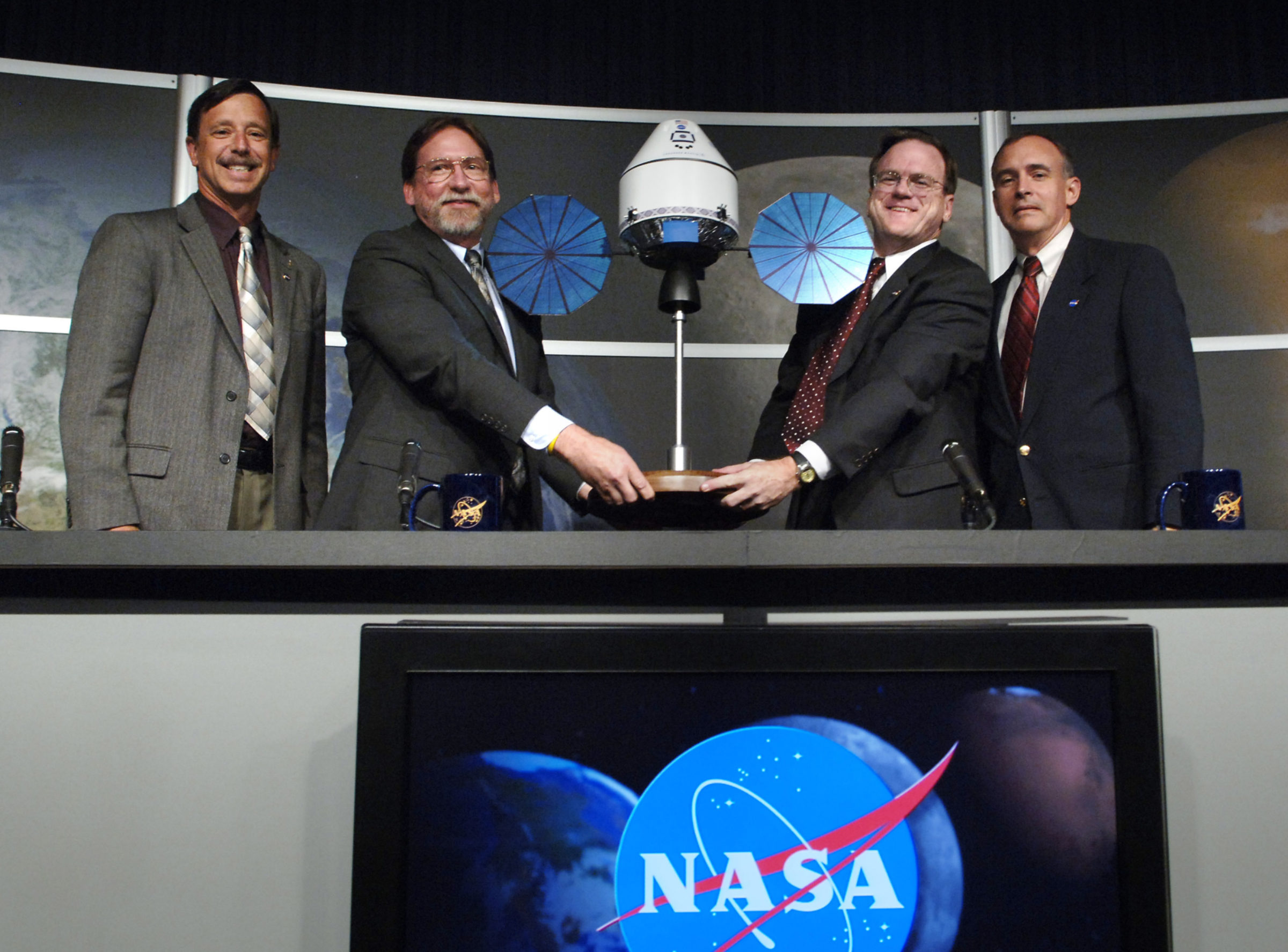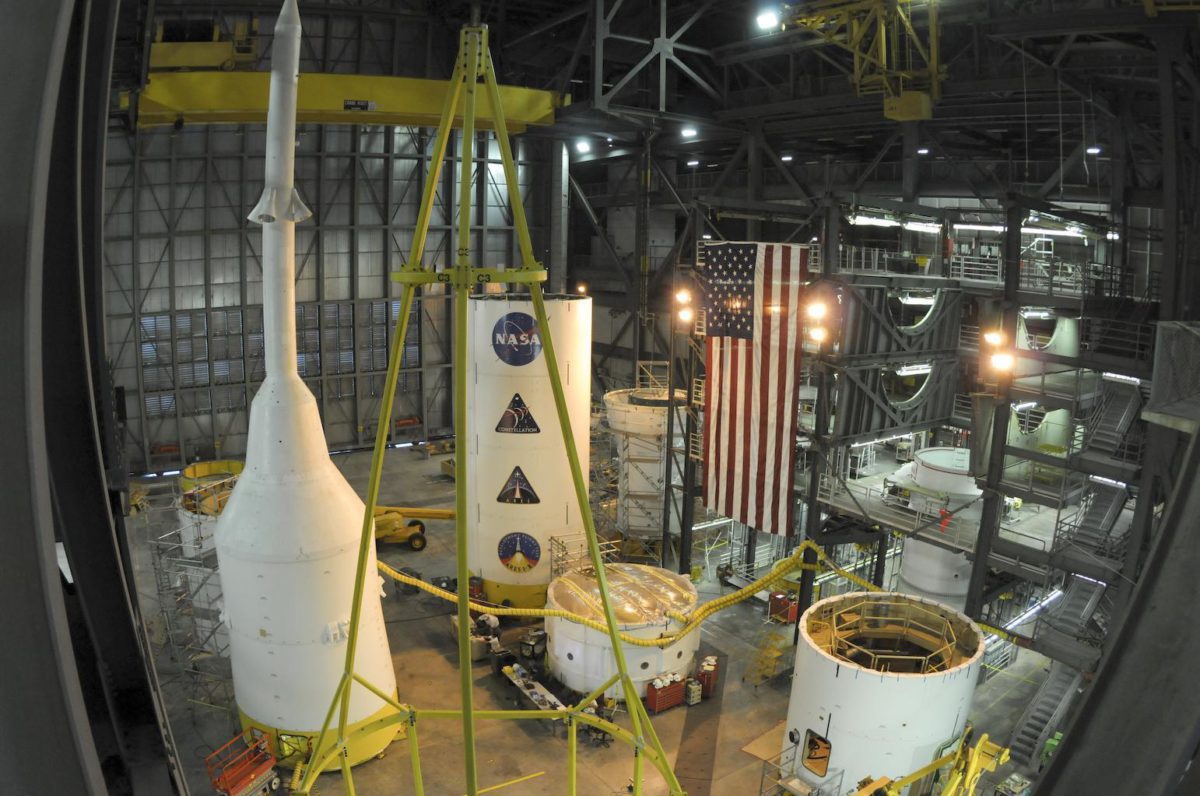Jason Davis • Aug 01, 2016
‘Apollo on steroids’: The rise and fall of NASA’s Constellation moon program
From 2005 through 2009, the space agency strove to recapture the glory of the space race—with less than half the funding
It was September 2005, and NASA administrator Michael Griffin faced down a room of reporters at NASA Headquarters in Washington, D.C.
Griffin had only been in charge of the agency for five months, having been nominated by President George W. Bush to succeed Sean O'Keefe, who resigned in December 2004.
In part one of our new Horizon Goal series, we examined how the president laid out a bold new vision for NASA in the wake of the Columbia accident that would retire the space shuttles in 2010, build and fly a new deep space crew vehicle by 2014 and land humans on the moon by 2020. The new program was called Constellation.
At the time, the space shuttle was America's only means for shipping crew and cargo to the International Space Station, which was scheduled to be completed in 2010 and de-orbited in 2016. NASA's potential alternatives included relying on foreign partners, outsourcing ISS runs to the private sector, using the yet-to-be-built crew vehicle, or some combination of all three.
To Griffin, this was untenable: NASA needed an in-house shuttle successor, and a plan to kick Constellation into high gear.
He commissioned an agency-wide tiger team which produced a report called the Exploration Systems Architecture Study, or ESAS. The report concluded NASA should build two new rocket systems and make the crew vehicle a gumdrop-shaped capsule similar to the Apollo vessels that first carried humans to the moon.
Constellation had a new look, and this press conference was the big reveal. In response to a reporter's question about the crew vehicle, Griffin made a remark that came to define the program.
"Think of it as Apollo on steroids," he said.
During the Apollo years, in 1966, NASA's budget peaked at $44 billion (all costs in this article have been converted to 2016 dollars for ease of comparison). But in 2005, the agency's budget was less than half of that, and that continues to be the case today.
Could NASA really do Apollo on steroids with one-half the funding?

Constellation version 2.0
Griffin's revamped Constellation program called for two new rockets named Ares I and Ares V. Ares was a nod to the Greek god associated with Mars, while the designators I and V were an homage to the Saturn moon rocket family. The crew capsule was christened Orion to represent a bright, recognizable constellation.
Ares I would be a skinny, single-stick rocket used to launch Orion. The core stage would be a modified space shuttle solid rocket booster, and a shuttle main engine would power the upper stage.
Ares V would be a cargo freighter, advertised at one point as being able to lift 160 metric tons to low-Earth orbit (by comparison, the space shuttle maxed out around 25 metric tons). Five shuttle engines and two modified shuttle rocket boosters would power the vehicle at liftoff, and for the upper stage, NASA would build a brand new liquid engine called the J-2X.
The Saturn V upper stage engine was called the J-2; hence, the J-2X was another component of 'Apollo on steroids.'
Griffin—an engineering junkie with Master's degrees in aerospace science, electrical engineering and applied physics, and a Ph.D. in aerospace engineering—declined to speak on the record for this story. However, research and interviews suggest several reasons he changed course from administrator O'Keefe's strategy.
Politically, the retirement of the space shuttles would be a triple whammy. Scores of space district workers would lose their jobs, America would lose access to the ISS just as it was completed, and perhaps worst of all, the iconic shuttles—the pride of the nation's space fleet for three decades—would be mothballed without a clear successor in the works.
By accelerating Orion development and building Ares I, Griffin hoped to have America flying to the station again as early as 2012—two years earlier than President Bush had envisioned.
Under O'Keefe, NASA had considered purchasing modified Delta or Atlas rockets to launch Orion and the hardware necessary for lunar missions. But Griffin's ESAS report found that "as many as nine" launches would be required for a single lunar mission. Ares V, on the other hand, could heave tremendous amounts of cargo to space in a single shot, which could reduce costs and lower complexity by cutting down on in-space assembly.
Furthermore, the ESAS report said re-using space shuttle technology had "significant advantages with respect to cost, schedule, safety, and reliability."

Behind schedule and over budget?
By the time Barack Obama was elected president in November 2008, a narrative had emerged that Constellation was behind schedule and over budget. Obama himself used that phrase in a 2010 speech at Kennedy Space Center, and this perception persists today.
Is it accurate?
By February 2009, NASA said Ares I and Orion would not fly until 2015. Although that was just a one-year delay from the timeline President Bush laid out in 2004, it was a three-year slip from Griffin's hope of being ready by 2012.
As for Ares V, in 2008, NASA claimed the mammoth rocket would still be ready to send humans to the moon by 2020—using a lunar lander called Altair—just as Bush had specified. In 2009, the agency was less explicit about the landing itself, but did say Ares V would still be operational by 2020.
The first NASA budget to include Constellation, released in 2004, asked Congress for $8.8 billion from 2005 through 2009. Almost all of that was for Orion—just four percent was set aside for procuring rockets.
An analysis of NASA budgets shows Constellation actually ended up spending $11.9 billion during that period—a cost overrun of $3.1 billion.
Future prospects
Although Orion and Ares I had yet to fly, Constellation's 26 percent cost overrun and one-to-three-year delay (depending on whether you choose Bush's or Griffin's timeline) was in good company with another ambitious, once-in-a-generation NASA project: the space shuttle. When Columbia finally launched in 1981, it was almost identically delayed and over budget.
Constellation's schedule and cost problems can also be attributed to NASA deciding to build its own rockets, which wasn't part of the original plan. However, despite this change in strategy, America's ISS access gap did not shorten as Griffin had hoped—it lengthened.
Furthermore, Constellation's future prospects were looking worse, not better. From 2010 through 2014, NASA projected Constellation would cost $28.7 billion. That's a cost increase of 140 percent over the program's first five years.
There were also doubts about whether Ares V would actually be ready to fly by 2020. Out of the $28.7 billion NASA was requesting for Constellation from 2010 through 2014, just $125 million was earmarked for Ares V, meaning the big rocket's development was being pushed farther into the future in favor of getting Ares I and Orion off the ground. In 2009, a blue-ribbon panel—which we'll discuss in the next Horizon Goal installment—concluded Ares V wouldn't be ready until the late 2020s, and that lunar landing hardware wouldn't be ready "until well into the 2030s, if ever."

The blame game
Many NASA and industry officials say Constellation was actually underfunded, which caused it to fall behind.
Between 2005 and 2009, NASA and the White House asked for about $1 billion more for the program than it received, but Congress—which can adjust the agency's yearly budget—cut Constellation funding in 2007 due to larger budget battles.
"I don't know who to blame, but all I know is that our budgets weren't there," said Doug Cooke, the former head of NASA's exploration division, during a phone interview. Cooke also said that on more than one occasion, NASA was forced to raid Constellation funds to cover other human spaceflight programs, including the last two space shuttle flights.
From 2005 through the end of the Bush administration, Constellation's costs increased an average of $834 million each year. But NASA's total budget only grew an average of $660 million annually, meaning either NASA was underfunded, Constellation was gobbling up a larger share of agency resources than originally envisioned, or both.
Jeff Bingham, an influential Senate advisor who helped draft three NASA oversight bills, said this created a recipe for intra-agency discontent.
"What you're doing is forcing everyone to be the enemy of [Constellation]," he told me. "You're basically undermining the kind of unified scientific support that you need to be able to sustain a program of this scope."

Technically speaking
From a technical standpoint, how was Constellation doing by the time President Obama took office?
Though the 2005 ESAS report was fairly specific in spelling out the plans for Ares I and V, both rockets underwent significant design changes.
Ares I was originally supposed to use a space shuttle main engine for its upper stage. By 2007, NASA switched to the J-2X, the yet-to-be-built Ares V upper stage engine. The move was apparently made after the agency concluded it would be too costly and challenging to re-engineer a shuttle engine to start in the vacuum of space (the shuttle's engines normally ignited on the launch pad and burned all the way to orbit).
The change might have later given NASA an advantage by having a common upper stage engine for both rockets, but in the short term, this meant the J-2X would have to be finished and tested before Ares I could fly.
Though Ares V didn't make it very far off the drawing board, NASA also concluded the RS-68 engine, which powers the Delta IV rocket, was a better choice for the rocket's core stage than shuttle engines.
Both of these moves eschewed shuttle technology for other options, yet one of the main reasons given in the ESAS report for NASA building its own rockets instead of buying them from Boeing or Lockheed was the availability of existing shuttle technology, which was supposed to cut costs, accelerate schedules, and make the rockets safer and more reliable—not to mention preserve the existing workforce.
In 2009, the Government Accountability Office declared Orion and Ares I faced "significant technical and design challenges," citing internal NASA planning tools that said the agency was working to resolve 207 high-risk problems. The most publicized of these was the potential for excessive Ares I vibration to violently shake Orion and its crew during launch.
By late 2009—after a test flight that we'll describe in Horizon Goal part three—NASA engineers had fixed the vibration problem, and were seemingly making progress on the other technical issues.
But was it too late? The Obama administration was already taking a hard look under Constellation's hood, and as a result, Apollo on steroids was in big trouble.
Support our space reporting
Want to learn when new Horizon Goal story segments are posted? Follow The Planetary Society on Twitter, or visit our Horizon Goal microsite, where we're co-publishing the series.
You can also support The Planetary Society's reporting efforts by becoming a member today.
Support our core enterprises
Your support powers our mission to explore worlds, find life, and defend Earth. You make all the difference when you make a gift. Give today!
Donate

 Explore Worlds
Explore Worlds Find Life
Find Life Defend Earth
Defend Earth

